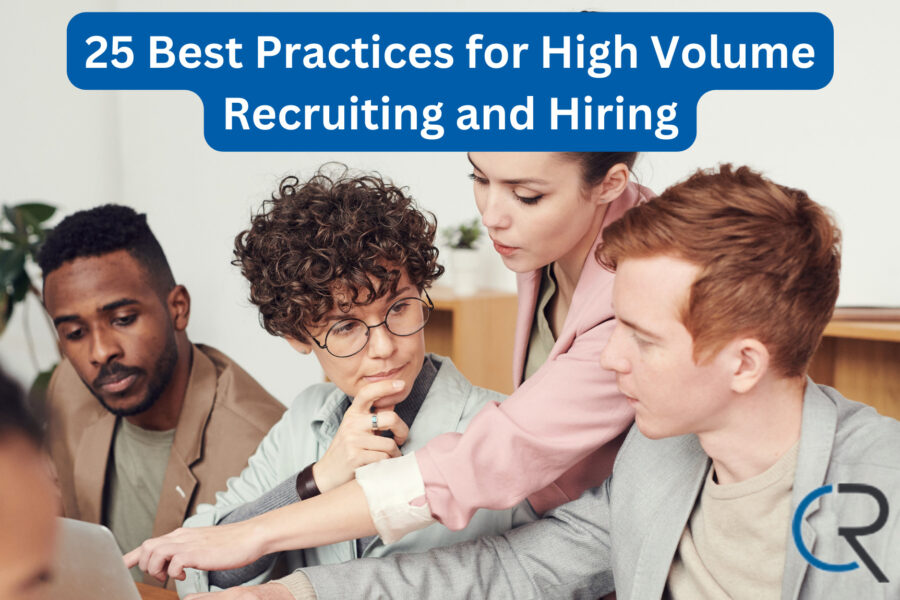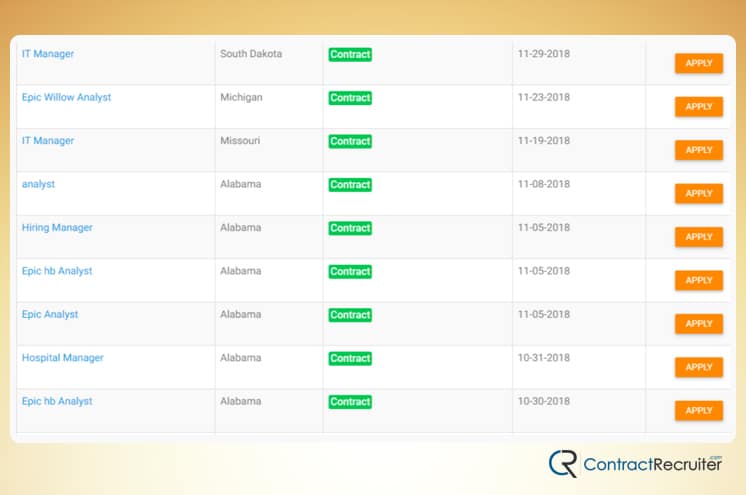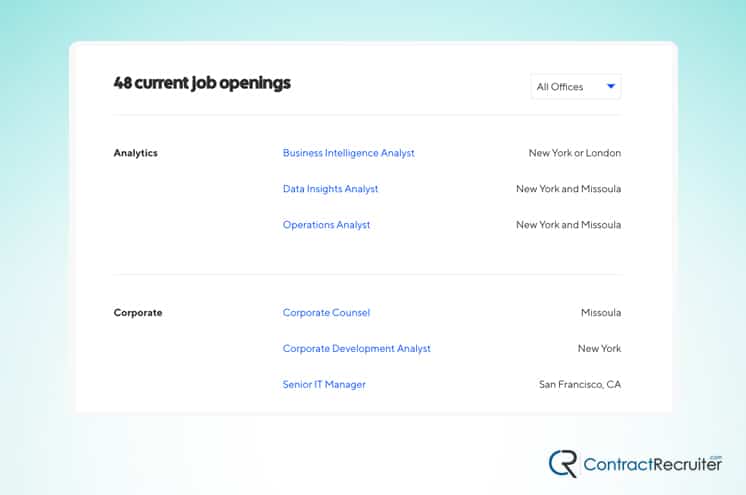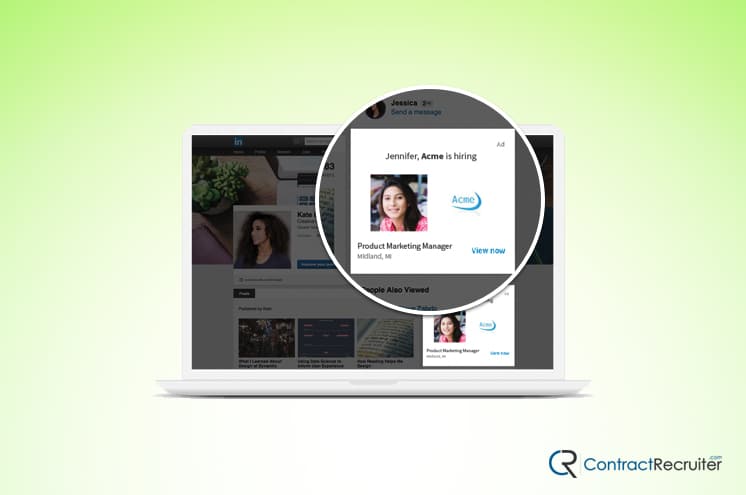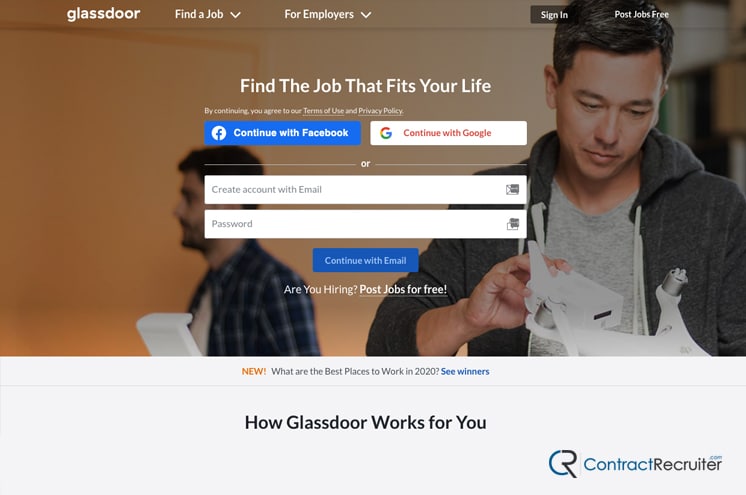Finding the right person for a role is difficult at the best of times. When you have a broad candidate pool, you can narrow it down to pull the best handful of candidates, interview them, and pick the one most suited to the role.
What happens, though, when you have hundreds or thousands of positions to fill? Sometimes, a company like Amazon simply has to find 30,000 people to fill open positions.
High volume recruiting and hiring is superficially similar to normal hiring, but the sheer number of roles to be filled necessitates some specific strategies, best practices, and techniques. Here are our 25 best practices for high volume recruiting and hiring.
1. Refine Your Branding
When a potential employee considers applying to your company, they will do their research. If they struggle to find hints of your company culture, your perspectives, your niche, or even your product, they will be much less likely to apply. Needless to say, building up and refining your brand is an important way to attract candidates.
Branding can include everything from the tone of your website copy to the information you disclose about your internal processes, to even the internal decorating shown in photos of your office. There’s plenty to work with.
2. Enhance Your Career Portal
Building a better career portal is similar to building up company branding, but more specifically focused on your HR processes.
A portal should be at least somewhat unique to your business – candidates have seen them all before and will recognize templates – and should include many of these features. Implement as much as possible and strive to create a compelling career portal with a built-in funnel to draw potential candidates into applying.
3. Define Categories of Roles
Part of high volume hiring is making sure you get enough applicants for each role to build up a large enough candidate pool. To do this effectively, break down the different roles you need to hire for, and define each category of roles. Determine what the typical job listing would look like for those roles. This helps you determine what is and isn’t critical to the role, what can be trained, what would be nice to have, and so on.
4. Define Ideal Candidates for Role Categories
Just as you have to define buyer personas to properly target online advertising, you need to properly define candidate personas to determine who you want to attract with your job listings. Like role categories, but the inverse; come at it from the perspective of the candidate. What should they have in terms of education and experience, what would be nice to have, and what can you train?
5. Post Job Listings for Each Role
It may sound obvious, but now and then we see a company that wants to recruit for a dozen different, related positions, and they only upload a single listing. Their idea is that people will follow the link to their career portal and will see the other jobs, but people don’t work like that.
If the job they see in a listing isn’t what they want, they aren’t going to click through just to hope there are better roles available; they’re going to look for better roles on the job site they’re browsing.
6. Remove Listings when Roles are Filled
You don’t have to wait for a suitably large candidate pool to begin filling positions with high volume hiring. Keep the listing alive, hire as you go, and when the position is filled up, then you can remove the job listing. People still interested in working for your company can view other listings. If someone you hired doesn’t work out, you can pick someone else from the existing candidate pool, or open the listing again to refresh applications.
7. Revive Past Applications
People are always applying for jobs, and they won’t always be hired. Those potential candidates can still be valuable in the future, especially when you’re hiring in bulk. You already have a candidate pool, even if many of the applications within are stale or verging on invalid. You can always send out an email to everyone on your list asking them to update their information for consideration for new positions.
8. Advertise and Recruit on Social Media
Social media is hugely important for modern hiring, both in individual positions and in high volume hiring.
Not only is it a big part of company branding, it’s a critical channel for contacting candidates, screening them, and even soliciting applications. You can even use Facebook, LinkedIn, and even Twitter to post job listings and accumulate candidates, usually with quite good results so long as you’re targeted with your advertising.
9. Actively Solicit Referrals from Employees
One of the best channels for viable candidates is actually the people you’ve already hired. You can set bounties or even just ask your employees to refer anyone they know who would be a good fit for the company. Your employees have a great knowledge of your company culture and will know who among their friends and family would fit in.
10. Monitor Referral Sources
As you accumulate candidates, monitor who makes it through the process. Keep track of information about each candidate, including where they applied from. This allows you to determine which channels are worth investing more in, and which aren’t pulling their weight. For example, maybe you find that you get a ton of applications from people on Glassdoor, but very few of them make it through the interview.
Conversely, perhaps you get only a few candidates from LinkedIn, but they are almost all hired. You’re doing something right, and can study it to apply the same techniques to other channels.
11. Expand Candidate Pools by Offering Training
If you have an extremely large volume of open positions to fill – like the Amazon HQ hires – you can easily run out of qualified candidates long before all of the open positions are filled. One potential solution to this is to expand what you consider to be a qualified candidate.
By looking for people who are less initially qualified, but offering training to bring them up to speed, you can fill many more positions while minimizing the cost of training by training in large classes rather than individually.
12. Monitor Interview to Hire Ratio per Applicant Source
One of the most important metrics to monitor when hiring in bulk is the proportion of people who make it from application to interview to hire. Comparing this piece of data – per source of the application, ideally – allows you to identify which channels are worth the effort and which are failing to provide adequate candidates. Additionally, by charting this ratio over time, you can see when you’re tapping out a certain campaign and may need to refresh advertising or job listing copy.
13. Monitor Location Data
Much like digital locations – LinkedIn, Glassdoor, Indeed, etc – you can monitor physical location for applicants. This is particularly important for larger companies that may be hiring across multiple locations, or who are willing to pay to relocate good candidates to their location.
When checking out location information, keep in mind broader-scale metrics like the unemployment rate for the state or city. It makes sense that the higher the unemployment rate, the more applications you’ll receive from the area. If you look at unemployment per sector, you can also estimate the applications you may receive from people in the roles or industry you’re hiring for.
14. Remove Barriers to Applying
Perhaps one of the most important best practices for high volume hiring is lowering the barrier to entry. The more you’re asking from a potential candidate in the application process, the more candidates will drop your application and move on. This is especially true of those 100+ question screener quizzes every job seeker has filled out a hundred times.
15. Distill Screening Questions
Speaking of personality screening systems like Taleo, they are only useful if you expect to get an extreme surplus of candidates. Otherwise, it’s much better to distill down the key questions you want to ask for deal-breaking answers, and provide a much shorter questionnaire.
Remember, it’s the most experienced candidates who are most likely to drop out of a lengthy application process. In fact, the ideal length for an application from start to submission is just five minutes.
16. Minimize Redundant Questions
Have you ever received an application that has multiple fields filled out with “it’s on the resume”? This is fairly common, because applicants hate being asked questions in an application form that are just asking them to repeat what’s in their resume.
You can avoid this by using software to parse resumes and extract relevant data. Either use one to autofill fields and have the user specify the rest, or rely on it on the back end to give you as much information as it can, and ask non-resume-relevant questions to round out the rest.
17. Rely on Technology for Screening
Technology can only do so much for hiring, and it can never replace the overview of a human in your human resources department. What it can do, however, is streamline many of the more tedious elements of applicant screening. In addition to resume parsing, you can use software to manage the initial job postings, stage-1 candidate filtering, and other tasks.
18. Avoid Hiring Warm Bodies
There’s always a temptation in high volume hiring to simply hire anyone with a pulse and a modicum of interest in the position, just to get the positions filled. Worry about filling the positions, and then deal with the turnover after a month or two when people drop out or are let go. This can be effective in some circumstances, but often it simply leads to chaos and an ineffective hiring process.
Worse, it can give your company a bad reputation for people who might want to apply in the future, which you then have to deal with.
19. Address Company Reviews
Speaking of company reputation, make sure to monitor company reviews on sites like Glassdoor.
You better believe that candidates are checking these reviews. Much like Yelp or WhitePages, you want to check these profiles and monitor reviews. Respond to reviews, both positive and negative, to reinforce company branding, address misconceptions or lies, and generally build a better reputation for your company.
20. Build a Presence at Job Fairs
Job fairs can be a good place to get rapid-fire resumes and applications from people, but they have one critical flaw; they don’t allow much time to really talk to a candidate. You won’t be hiring the top-tier candidates from such fairs, but you can get a lot of new entries to your candidate pool, which you can draw on later for that or other roles.
21. Contact Candidates at Their Convenience
With modern communication, it can be difficult to reach candidates at a time that is both during business hours and a time when the candidate is available to talk. Many companies, particularly those working on high volume hiring, simply drop candidates that don’t pick up the phone after a couple of attempts. You’re more likely to hook the best candidates if you can work around their schedules, however.
22. Automate Scheduling Whenever Possible
One huge challenge with high volume recruiting is keeping track of all of the different schedules necessary to handle interviews.
This is another area where modern technology helps a ton. There are a lot of different appointment management apps, and many of them link into HR systems to help schedule interviews back to back.
23. Keep Unused Applications Warm
Whenever a candidate applies, add them to a mailing list. This specialized mailing list exists solely to keep those applications warm for people who don’t make it to the interview stage right away. Even if the candidate picks up another job in between, you still may be able to entice them with a better offer or a better role later on down the line. It costs you nothing to maintain, and the potential benefits are excellent.
24. Work with a Team
Mass recruiting is not a solo effort. Your entire HR team will need to be part of this process, and you may even end up needing to hire for HR before you can take on a large enough undertaking. Make sure your team is on the same page as soon as possible, to minimize conflicts and errors in the hiring process.
25. Work with a Staffing Firm
Another option, particularly if your team isn’t suited to handling everything itself, is to contract a staffing firm to fill at least some of the open roles. Staffing firms may or may not be able to provide you with the best candidates, but they can fill some roles while you handle recruiting for more specialized positions manually.
Conclusion
In the dynamic world of high volume recruiting, embracing the best practices we’ve discussed is pivotal for streamlining the hiring process. From enhancing your career portal to leveraging social media and referrals, each strategy contributes to a robust recruitment framework. As you implement these tips, remember that the goal is to attract top talent efficiently while maintaining the quality of your hires.
To stay ahead in this fast-paced hiring environment, we encourage you to continually refine your processes and keep abreast of emerging trends.
Ready to revolutionize your recruitment process? Start applying these best practices today and watch your organization’s hiring potential transform. And if you’re seeking personalized guidance, our team is here to help. Contact us for expert advice tailored to your high volume recruiting needs.
Let’s make your recruitment journey a success story!
Page updated on November 19, 2023.

